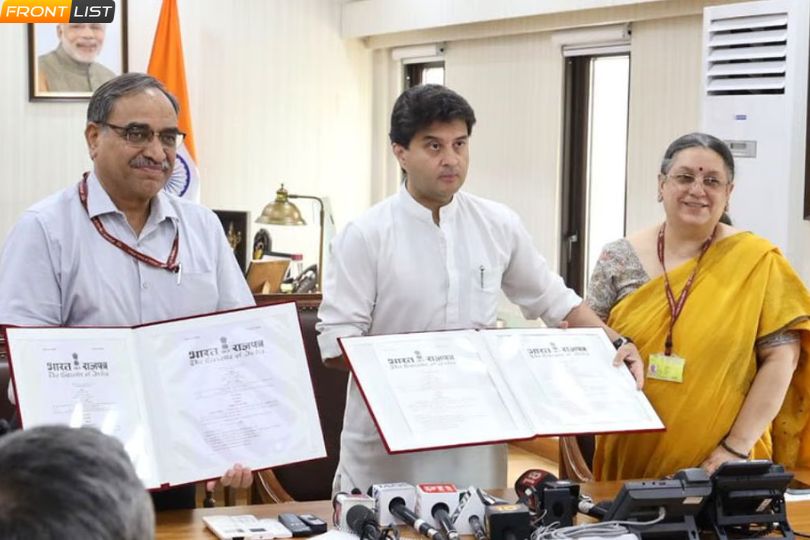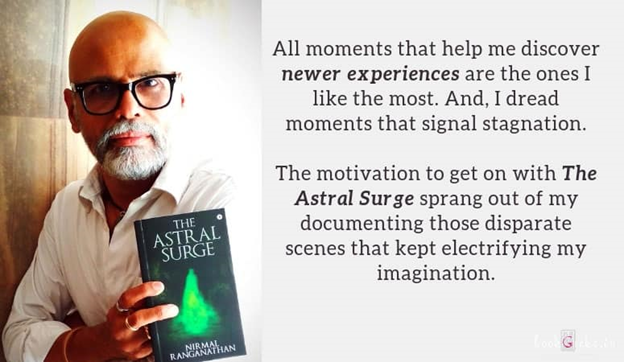Interview With Hemma Myers Sood, Author Of 'Tijara's Mystery Codes'
on May 23, 2022

Hemma Myers Sood is an author. At 29, she released her first book, The Eternal Ocean of Brahma, which conveys the wisdom of the Bhagavad Gita imbibed through intuitive perceptions of the waves of the ocean. A revised version of this book called The Oceanic Geeta, was released in October 2020. Her sixth book, Karmic Cords, is a poignant narrative of the author’s personal loss of her sibling.
Hemma’s Tijara’s Mystery Codes, is uniquely interwoven with historical fiction, murder, palace intrigue and clairvoyance.
Frontlist- How is the story of Mahabharata connected to the events that happened in Tijara Fort?
Hemma- The ancestors of Tijara, King Susharma and his brothers had sided with the Kauravas and fought against the mighty Pandavas. King Susharma had deceptively led Arjuna away from the battlefield. The Kauravas had created the dreaded Chakravyuh and deceitfully trapped Arjuna’s son, Abhimanyu. They had brutally killed him, breaking all the battlefield laws and morals during the fratricidal battle of Kurukshetra.
Frontlist- How did you come up with the story of Amrita, a potent anti-ageing elixir?
Hemma- The mystical Amrita is an unknown fact of the historical data of the Mahabharata scriptures. Since it was cursed by Maharani Madri, knowledge of its existence was suppressed through millennia.
The deathly curse would fall on anyone who partook it. They would mysteriously die within a cycle of Prithvi traversing around Surya.
Frontlist- You’ve mentioned three different timelines, and all stories are set in Tijara City. You could’ve chosen some other historical city. Why did you choose ‘Tijara’ to write this book?
Hemma- I was on my way to Tijara Fort Palace in Rajasthan, in November 2015; it was my first trip. I was travelling with a Japanese couple who were staying at my cousin’s house. We were busy talking throughout the journey, but as we neared the Tijara Fort Palace, we craned our necks to gaze up at its magnificent structure. None of us had realised that the driver had taken a turn onto a mud road at the foothills of the Tijara Fort. We took a U-turn when we realised that we were on the ’wrong’ road.
Unfortunately, the car sank into the soft sand. Half an hour later we were rescued by a tractor that pulled the car out. I never imagined that this ‘wrong’ turn would change my life tracks.
Three weeks later I began writing about this incident and it grew into this amazing paperback.
Frontlist- Is every fact contained in this book - true or fictitious, as it is historical fiction?
Hemma- It is 90% historical facts and 10% fiction. History is a detailed narrative of events, facts and dates, it leans towards drudgery and tends to be a little boring. When it is interwoven with fiction, it becomes more interesting.
The book is classified according to the days of the Hindu Calendar. How did you write the draft of the whole story?
Since the storyline originated from our ancient scriptures, I followed the tenor set by the Mahabharata narrative. During that era there is no mention of the Gregorian calendar which is widely followed. I began writing the first draft after that DESTINED WRONG TURN on the mud road at the foothills of Tijara fort palace.
Frontlist- The book is classified according to the days of the Hindu Calendar. How did you write the draft of the whole story?
Hemma: Since the storyline originated from our ancient scriptures, I followed the tenor set by the Mahabharata narrative. During that era there is no mention of the Gregorian calendar which is widely followed.
I began writing the first draft after that DESTINED WRONG TURN on the mud road at the foothills of Tijara fort palace.



.jpg)






.jpg)

.jpg)
.jpg)

.jpg)
.jpg)










Sorry! No comment found for this post.